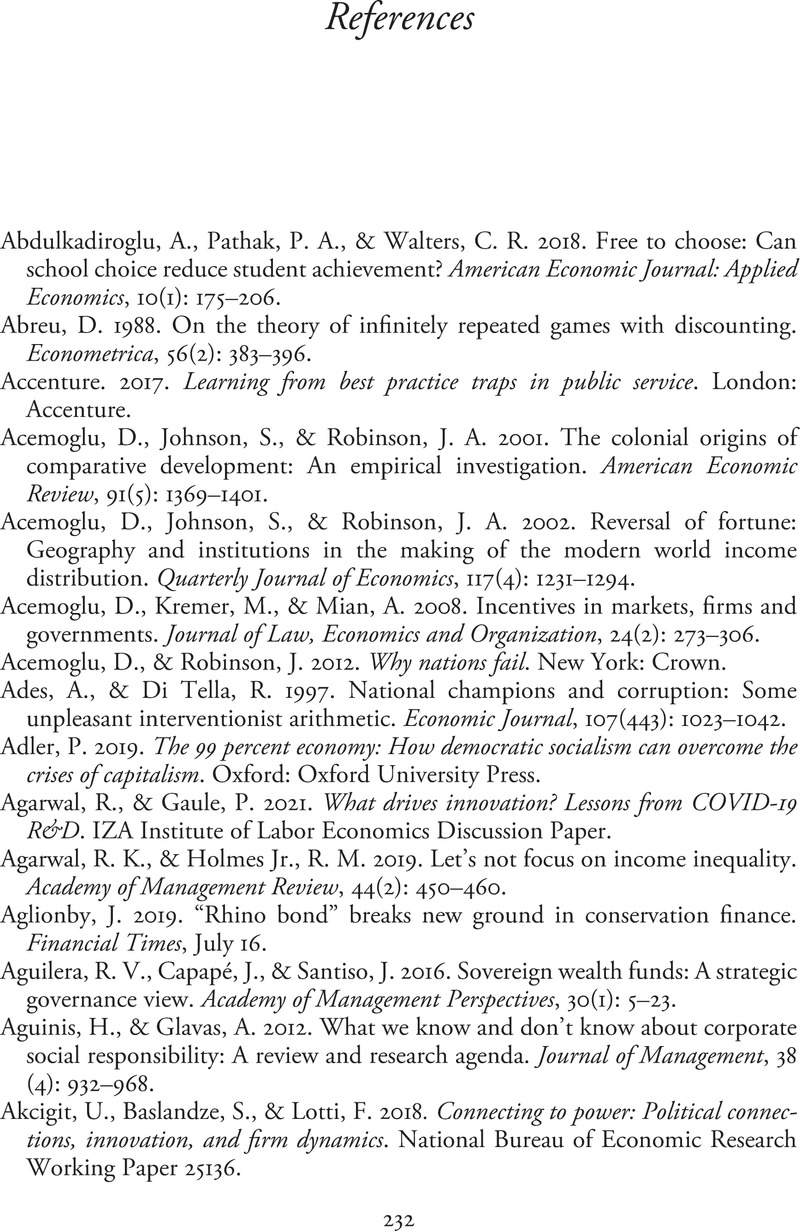Book contents
- The Right Privatization
- The Right Privatization
- Copyright page
- Dedication
- Epigraph
- Contents
- Figures
- Tables
- Acknowledgments
- Introduction
- Chapter 1 Public or Private?
- Chapter 2 The Effectiveness–Inclusion Framework
- Chapter 3 Public, Private, and Their Variations
- Chapter 4 Privatization Needs Capable Governments
- Chapter 5 Completing the Contracts
- Chapter 6 Private Investors in the Public Interest?
- Chapter 7 Public Promotion of Private Capabilities
- Chapter 8 A Roadmap to Privatization (and Its Alternatives)
- Book part
- Notes
- References
- Index
- References
References
Published online by Cambridge University Press: 31 March 2022
- The Right Privatization
- The Right Privatization
- Copyright page
- Dedication
- Epigraph
- Contents
- Figures
- Tables
- Acknowledgments
- Introduction
- Chapter 1 Public or Private?
- Chapter 2 The Effectiveness–Inclusion Framework
- Chapter 3 Public, Private, and Their Variations
- Chapter 4 Privatization Needs Capable Governments
- Chapter 5 Completing the Contracts
- Chapter 6 Private Investors in the Public Interest?
- Chapter 7 Public Promotion of Private Capabilities
- Chapter 8 A Roadmap to Privatization (and Its Alternatives)
- Book part
- Notes
- References
- Index
- References
Summary

- Type
- Chapter
- Information
- The Right PrivatizationWhy Private Firms in Public Initiatives Need Capable Governments, pp. 232 - 261Publisher: Cambridge University PressPrint publication year: 2022

